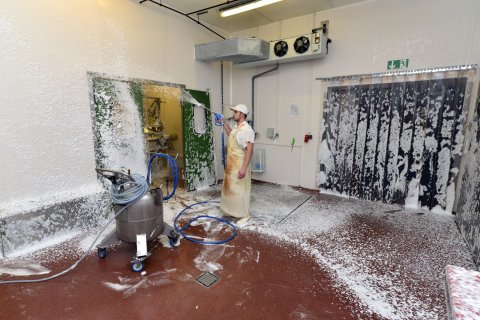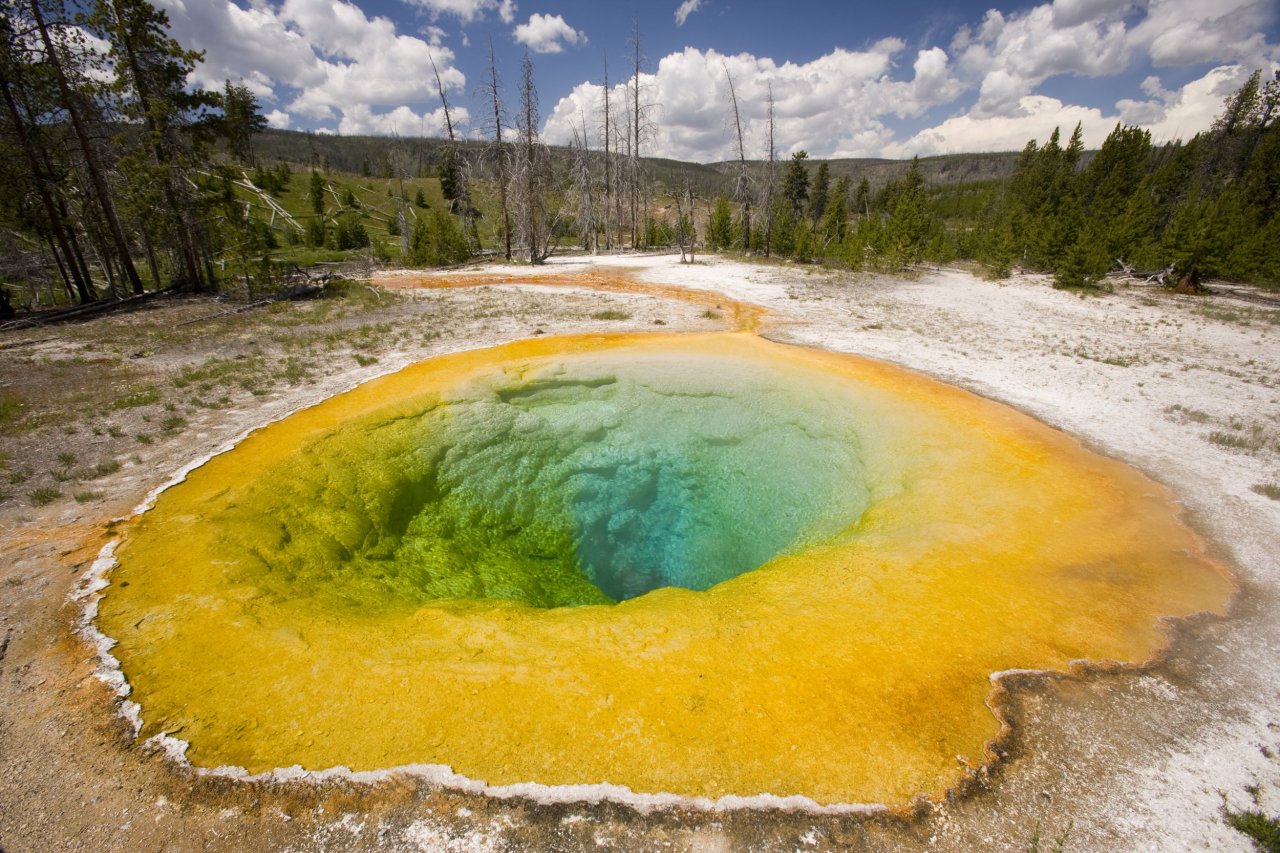Life has been found in just about every crevice, nook and cranny of the Earth that's been explored, from the deep ice of Antarctica to the superheated thermal vents far under the ocean floor. All of these tough critters—"extremophiles," as scientists call them—have found incredible ways of thriving in environments that just decades ago biologists would have said were inhospitable to any life form.
A team of entrepreneurial scientists are hoping that some of the tools these microbes have evolved to survive the geysers and hot springs of Yellowstone National Park, where they make their home in boiling sulfuric acid, can make our world a little less toxic. CinderBio, a California-based company working in the SkyDeck startup incubator of the University of California, Berkeley, wants to replace some harsh industrial chemicals with extremophile enzymes, the tiny "machines" inside every cell that speed chemical reactions, like breaking up proteins for digestion.
"Any cellular process that you can think of, there's an enzyme that's doing that," says biophysicist and CinderBio co-founder Jill Fuss. "So we find natural enzymes that do the things that we want them to do." Enzymes aren't alive and can't reproduce, but they can do work even outside of a cell.
Humans have been using enzymes for thousands of years. When the Greeks and Romans were using yeast to make alcohol, they were harnessing the tiny enzyme powerhouses in yeast cells. But it wasn't until the 20th century that scientists figured out how to manufacture enzymes and use them in isolation to harness their specific powers. In 1914, German chemist Otto Röhm, who would go on to invent Plexiglas, patented the first enzyme-based laundry detergent after experimenting with enzymes in the digestive systems of animals. Housewives are said to have been so skeptical of the tiny package that housed Röhm's Burnus that, in order for it to be sold, the detergent had to be reformulated so it came in a bigger box.
Enzymes went on to revolutionize the sugar industry, allowing food scientists to turn corn into the now-ubiquitous high fructose corn syrup that was cheaper and sweeter than cane sugars. Industrial enzymes are now used in everything from aiding the fermentation process for beer to making your bread soft. They are also often added to animal feed, aiding livestock's digestion and helping deliver the most nutrition possible. Enzymes are already a $4.2 billion industry, and that's expected to keep growing 7 percent a year as scientists find more enzymes and apply them in more situations. Look closely at your household cleaners and odor removers, and you'll see many of them already use enzymes.
While all these applications have been momentous, they've been limited by the conditions in which most enzymes operate: the cells of animals who live at temperatures like ours, boring old "mesophiles," in chemistry-speak. Cleaning, for example, typically uses really, really hot water—because microbes can't survive it. But that also means most enzyme tech to date also can't function in the high heat. What's different about CinderBio's enzymes is that they work at extremely high temperatures: between 122 and 221 degrees Fahrenheit, well above boiling. And because they evolved in Yellowstone's sulfuric pools, they'll still work even if submerged in a liquid as toxic as battery acid. That makes them perfect for industrial applications where high heat and acidity are common.

CinderBio tricks microbes into making hundreds of thousands of times more of the protein-busting enzymes than the microbe normally needs and then harvests them. An early application is replacing harsh chemical cleaners, which also do things like break apart proteins to make them easier to clear away. "You know that slippery feeling on your hands when you touch bleach? That's the proteins in your hand breaking down," Fuss says.
Chemical cleaners have several drawbacks, not the least of which is they work on your fingertips. Cleaning molecules have to ping-pong around a solution like lottery balls, occasionally banging into a protein strand and chemically blowing it apart. The process is slow and random, and a cleaning molecule can work only one time before it has spent its payload. An enzyme, on the other hand, quickly seeks out and grabs microscopic strands of protein as if they were spaghetti and inches down the proteins, cutting them into pieces. "They're basically like scissors," says Fuss.
The company's first test of its product was at a creamery, where milk products are processed and bottled. They found that using enzymes cut down the amount of water the creamery needed to clean its milk tanks and pipes by 30 percent and sped up the process by 25 percent. "We clean faster and better," says Steven Yannone, a biochemist and CEO of CinderBio, who expects even bigger gains as the company perfects its product. And a single enzyme can break millions of bonds before it stops working, giving it a huge advantage over chemical cleaners.
Even better: The process of making and using enzymes is a lot greener than chemical cleaners. "A lot of the chemicals and stuff we're using in our daily life never existed before the last 100 years. When you think about that in evolutionary time, the planet and everything on it knows how to deal with biomolecules," says Yannone. When CinderBio's enzymes are done breaking things down, they're just organic molecules, ready to be eaten by other microbes. And the enzymes are inactive at most temperatures on the planet and spring into action only when it's hotter than 122 degrees—meaning they're totally safe if they end up in a river or in the water used on crops.
Ryan Bethencourt, IndieBio program director and venture partner, is an investor in the biotech space. He sees big potential for enzyme technology. "I believe within five to 10 years most larger corporates will switch to greener industrial cleaning, not just for the environment but also for their bottom line," he says. "Biology is greener and, at scale, should be incredibly cost-effective: The cost of goods sold should be little more than the sugar water needed to brew these enzymes."
Fuss says CinderBio is looking for customers and partners but also sees a variety of possible applications well beyond cleaning, in industries like textiles and paper pulping. The path from the hissing brimstone pools at Yellowstone to industry seems amazing, but we probably shouldn't be surprised, Fuss explains, because "biology has been working this out for 3 billion years."

















